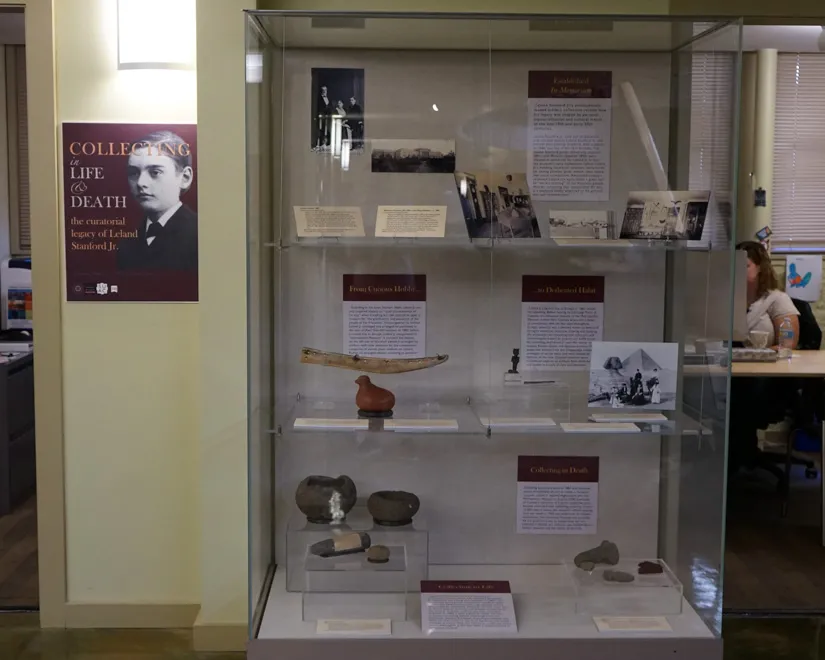The Stanford Archaeology Center now hosts “Collecting in Life and Death: The Curatorial Legacy of Leland Stanford Jr.,” a student-created exhibit that explores Leland Jr.’s affinity for collecting.

Anthropology Ph.D. candidate Sabrina Papazian curated the exhibit, which centers on the boy whose teenage death prompted Leland and Jane Stanford to found the University. According to Papazian, much of the exhibit concerns Leland Jr.’s multiple identities as both an adolescent boy and a cultured, invested art collector.
“I was always very curious about this University and the museum, as they were created in memoriam of a sixteen-year-old boy — how much of that was a memorialization, and how much of that came from Leland’s own interests,” Papazian said. “He really did seem like someone who was very passionate about collecting archaeological objects.”
Papazian also said that Leland Jr.’s passion for collecting is apparent in biographies written by his tutor.
“Collecting in Life and Death” encompasses a mixture of Leland Jr.’s own collections: an Egyptian Votive figurine from the god Osiris that he likely acquired from collector Jean Henri Hoffmann, as well as stone mortars and pestles — artifacts from that Ohlone tribe that Leland found on the Stanfords’ property. Additionally, much of the exhibit is photographic: Papazian adorns its top shelf with dated photos of the Stanford family, the old Leland Stanford Jr. Museum on campus and collections formerly housed in the family’s Nob Hill mansion.
Through her two-year research process, Papazian sorted through an array of collection records. The catalog cards, which Stanford uses to organize collected objects, reflected original records from 1893 to the mid-1900s. When the Leland Stanford Junior Museum reopened as the Cantor Center, catalog cards were registered in several ways, and occasionally information was lost. Ultimately, though, Papazian’s experience with the catalog cards acquainted her with the objects themselves.
“I spent my first year working there finding every single object I could that was connected to Leland Stanford Jr., and then, once I would find them in the catalog cards, I would go through the boxes and try to find the objects themselves,” Papazian said. “Because I knew what we had so intimately… this narrative came out. It was very cool to research these objects within the history and context of Stanford.”
The Archaeology Collections, in partnership with Green’s Special Collections, are working with 3D laser scanners to digitize the exhibit. A digital rendition of Collecting in Life and Death will launch online during winter quarter.
“We’re still in the early phases of the process,” said Christina Hodge, academic curator and collections manager of the Stanford Archaeology Collections. “There will be an online exhibit that features those digital models and Sabrina’s text. We’ll let viewers have a hyper-real experience of manipulating objects and zooming into them online… in a way you couldn’t even do with the real objects.”
Papazian, too, sees the digitalization of the Collecting in Life and Death exhibit as an opportunity for her work to reach greater audiences.
“I think merging technology with archaeology and artifacts is really important, because it makes archaeology more accessible,” she said. “It allows people to interact with objects in different ways. You can move 3D-scanned objects around in ways that you can’t with an actual object in a case — it’s too fragile.”
Papazian’s own interest in the research lies in her commitment to better understand Stanford’s historical narrative.
“A lot of people just accept the history of their university as fact and don’t really delve deeper into it,” she said. “I think this exhibit and the other exhibits in the archaeology center deepen this history that we are literally standing on.”
Contact Courtney Douglas at ccd4 ‘at’ stanford.edu.
